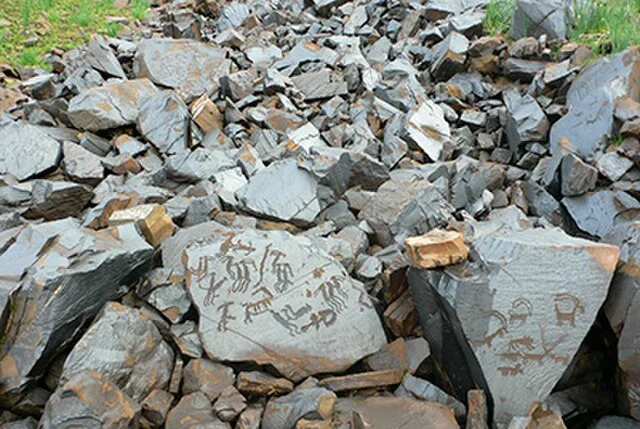The Saimaluu-Tash petroglyphs, located in Kyrgyzstan, represent one of the most significant archaeological sites in Central Asia. These rock carvings date back to various periods, primarily from the late Bronze Age to the early Iron Age, around 1000 BC to 200 BC. They provide crucial insights into the culture and beliefs of ancient nomadic societies.
Get your dose of History via Email
Location and Discovery
Saimaluu-Tash lies in the mountainous region of the Tien Shan, near the town of Kyzyl-Suu. Archaeologists discovered these petroglyphs in the 1950s. The site includes more than 10,000 individual carvings spread over several kilometers of rocky outcrops. Scholars believe the location was significant due to its natural beauty and strategic importance.
Artistic Features
The petroglyphs depict various subjects, including animals, humans, and geometric shapes. Commonly represented animals include horses, deer, and wild goats. The images show dynamic poses, suggesting movement and action. Human figures often appear alongside animals, indicating a relationship between the two. Some carvings depict rituals, hunting scenes, and daily activities, providing a glimpse into the lives of the ancient people.
Cultural Significance
The Saimaluu-Tash petroglyphs are vital for understanding the spiritual and cultural practices of the nomadic tribes that inhabited the region. The representations of animals likely held symbolic meanings, related to hunting rituals or spiritual beliefs. The presence of human figures in ceremonial dress suggests a complex social structure and possible shamanistic practices.
Preservation and Protection
Preserving the Saimaluu-Tash petroglyphs is essential due to their historical value. The site faces threats from natural erosion and human activities, such as tourism and development. In response, local authorities and international organizations have worked to protect the site. Conservation efforts include monitoring and controlling access to the petroglyphs.
Conclusion
The Saimaluu-Tash petroglyphs offer invaluable insights into the ancient cultures of Central Asia. They illustrate the artistic expression, daily life, and spiritual beliefs of the nomadic tribes that once roamed this region. Continued research and preservation efforts will ensure that this important archaeological site remains a source of knowledge for future generations.
Source:

